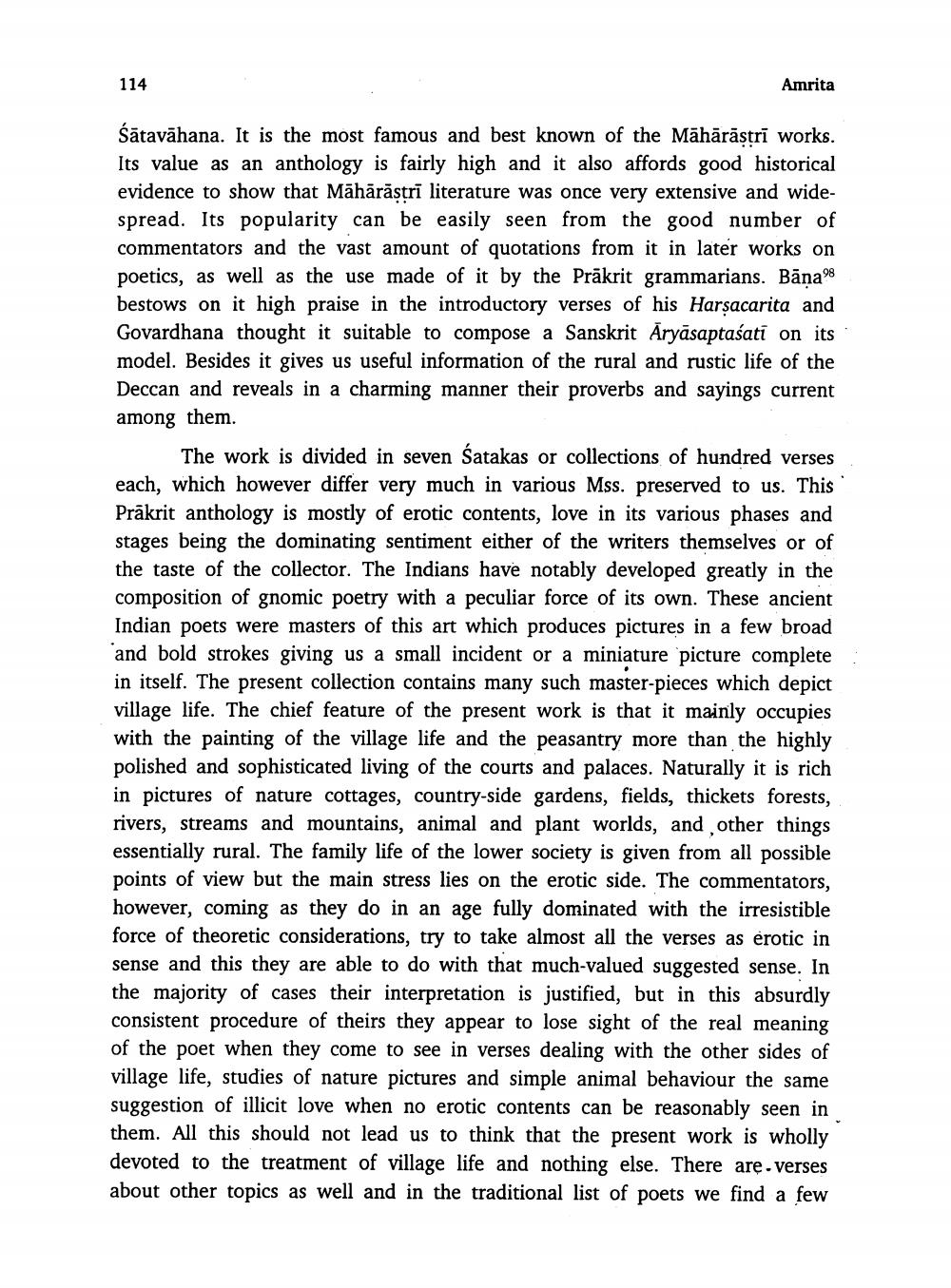________________
114
Amrita
Śātavāhana. It is the most famous and best known of the Māhārāstrī works. Its value as an anthology is fairly high and it also affords good historical evidence to show that Māhārāștrī literature was once very extensive and widespread. Its popularity can be easily seen from the good number of commentators and the vast amount of quotations from it in later works on poetics, as well as the use made of it by the Prākrit grammarians. Bāna98 bestows on it high praise in the introductory verses of his Harsacarita and Govardhana thought it suitable to compose a Sanskrit Aryāsaptašati on its model. Besides it gives us useful information of the rural and rustic life of the Deccan and reveals in a charming manner their proverbs and sayings current among them.
The work is divided in seven Satakas or collections of hundred verses each, which however differ very much in various Mss. preserved to us. This Prākrit anthology is mostly of erotic contents, love in its various phases and stages being the dominating sentiment either of the writers themselves or of the taste of the collector. The Indians have notably developed greatly in the composition of gnomic poetry with a peculiar force of its own. These ancient Indian poets were masters of this art which produces pictures in a few broad and bold strokes giving us a small incident or a miniature picture complete in itself. The present collection contains many such master-pieces which depict village life. The chief feature of the present work is that it mainly occupies with the painting of the village life and the peasantry more than the highly polished and sophisticated living of the courts and palaces. Naturally it is rich in pictures of nature cottages, country-side gardens, fields, thickets forests, rivers, streams and mountains, animal and plant worlds, and other things essentially rural. The family life of the lower society is given from all possible points of view but the main stress lies on the erotic side. The commentators, however, coming as they do in an age fully dominated with the irresistible force of theoretic considerations, try to take almost all the verses as erotic in sense and this they are able to do with that much-valued suggested sense. In the majority of cases their interpretation is justified, but in this absurdly consistent procedure of theirs they appear to lose sight of the real meaning of the poet when they come to see in verses dealing with the other sides of village life, studies of nature pictures and simple animal behaviour the same suggestion of illicit love when no erotic contents can be reasonably seen in them. All this should not lead us to think that the present work is wholly devoted to the treatment of village life and nothing else. There are verses about other topics as well and in the traditional list of poets we find a few




